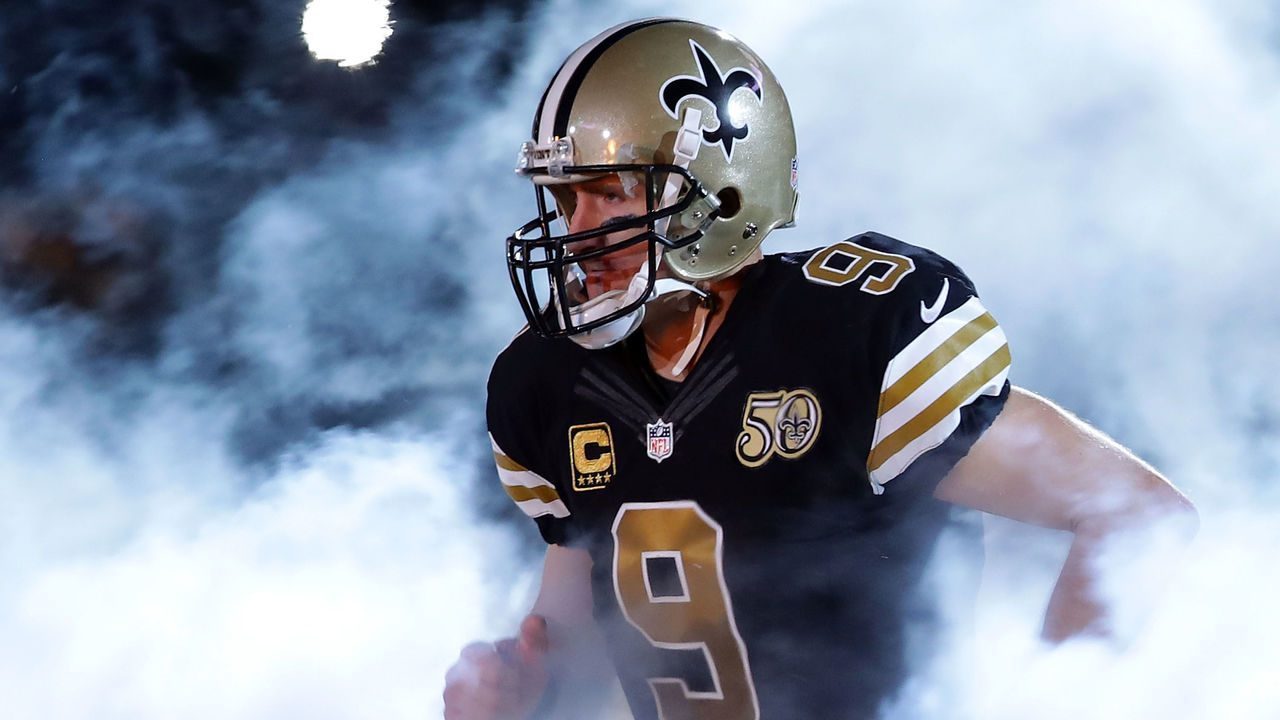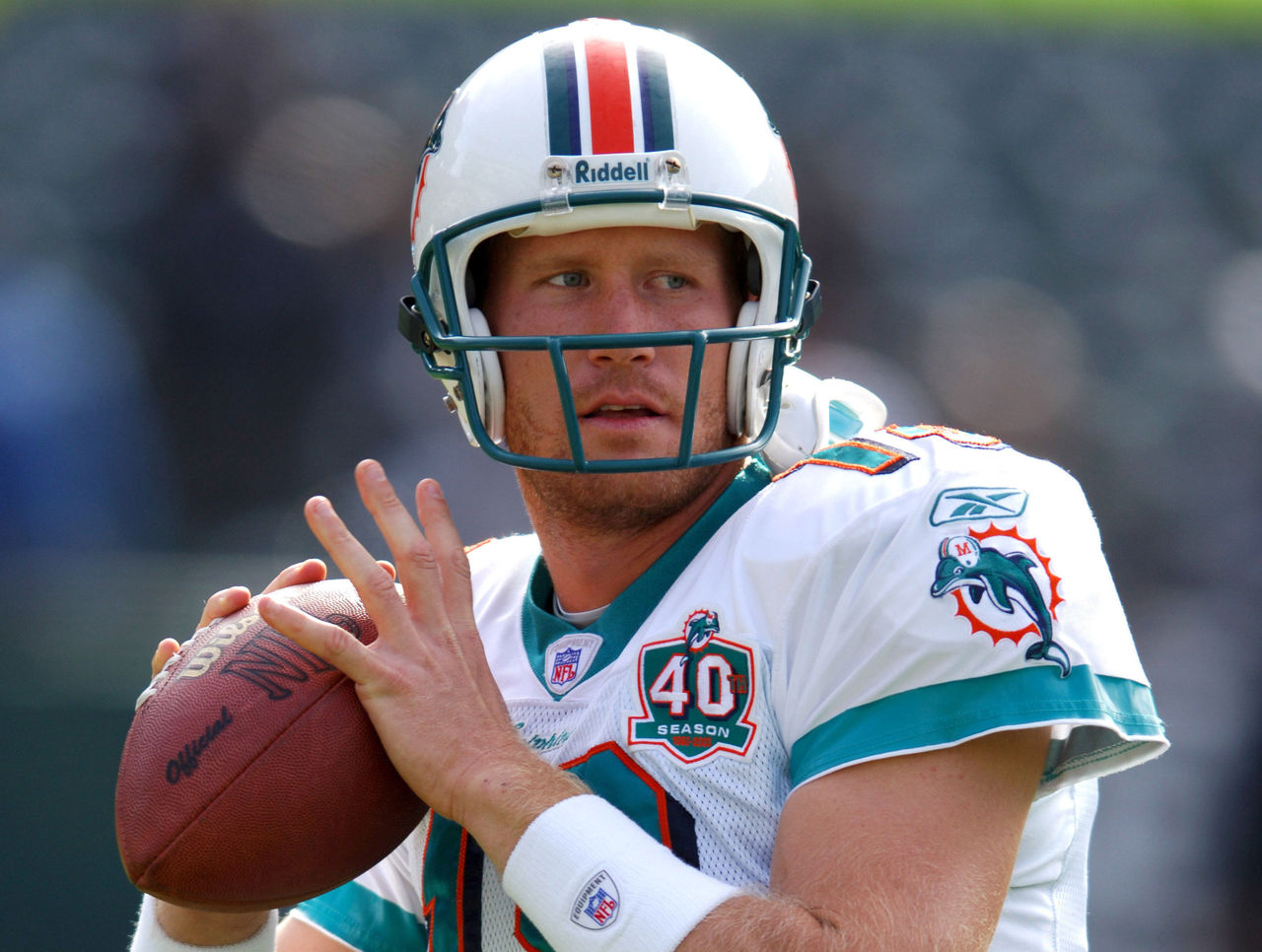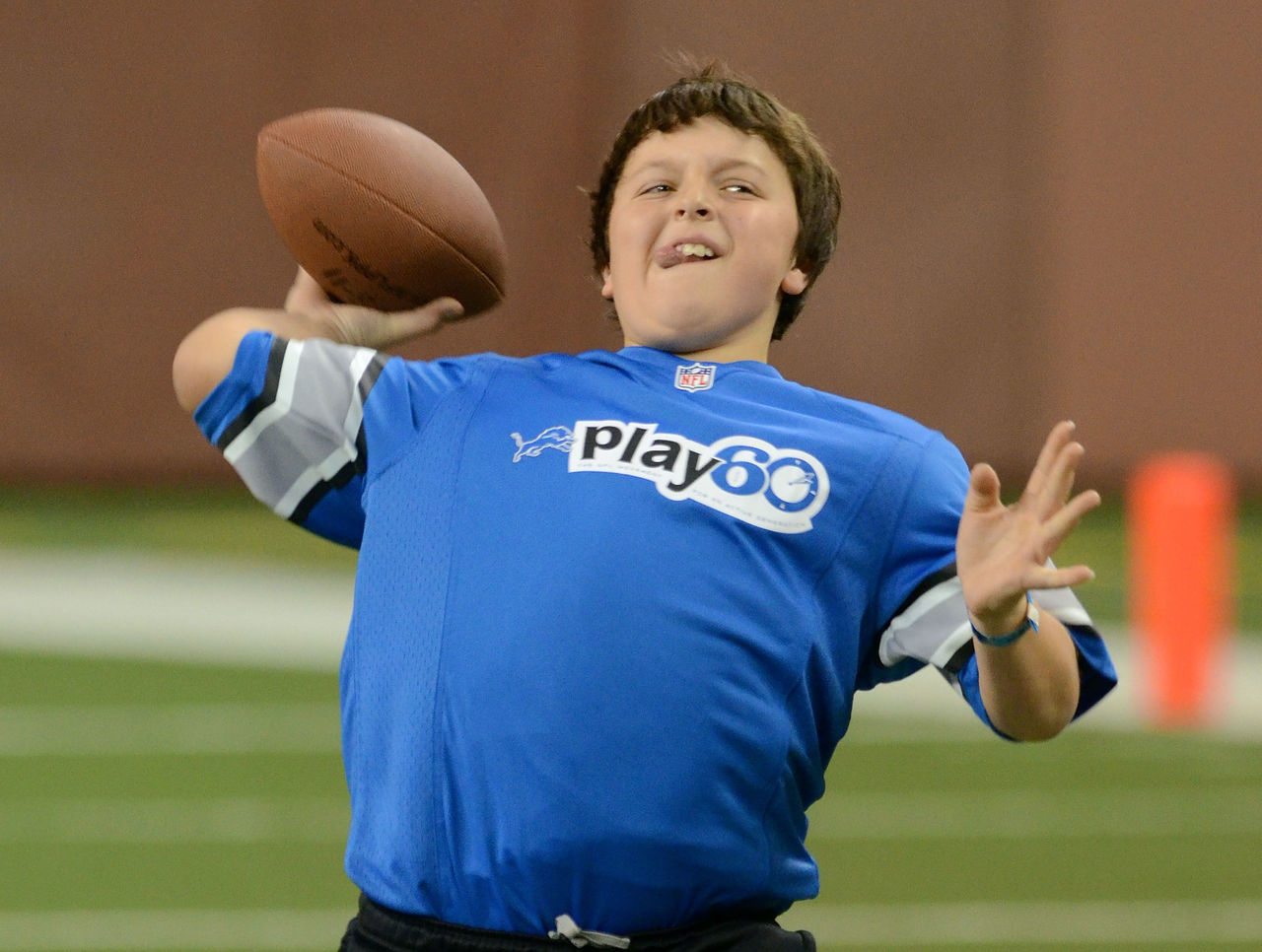Sage Rosenfels column: How to save football from itself
Sage Rosenfels is a former 12-year NFL quarterback who writes, does radio, and podcasts about the NFL and college football.
The NFL, and football in general, has a major problem.
The concern with concussions and bodily injuries, at all levels of the sport, has had a negative impact on the participation rates in America's youth leagues. The reasons are obvious: parents are becoming more and more cautious with their children as it relates to the injuries which occur in the sport of football, and rightfully so.
So far, the NFL's answer seems to be better equipment, and education of coaches to teach proper technique at the youth level. While these are both viable solutions to the problem, they will only bring down the number of head, bone, and soft tissue injuries by a limited amount. Something has to change - and Drew Brees wants to be a part of the solution.
The way to fix the problem with playing football is to not play football - at least in its current form. I regularly have concerned parents ask me about the proper age to play tackle football. My answer is always the same. "At what age would you let your child box?" I usually get a confused glance in return.
The way I see it, even though football and boxing are so different, both result in regular blows to the head and body. If offensive or defensive linemen play 50 snaps in a youth football game, I would estimate that they get hit in the head on 30-40 of those plays. They may not be "car accident" type hits, but they are still small jabs which add up over time.
For a running back, linebacker, or safety, they may "only" have 20 hits to their helmet. The problem is, since they are positioned further from their opponent and can generate more speed leading up to contact, those hits are often much more severe. Rather than jabs, 5-10 of these are more like uppercuts. These are estimates based only off me playing the sport after high school for 17 years.
Football, as a sport, is flawed. This is a fact. If you play tackle football, your body and brain will take a beating (with a few exceptions based on a player's position).

Brees, who will statistically go down as one of the greatest quarterbacks to ever put on a helmet, has formed a new league in New Orleans, Baton Rouge, and Covington, La. It's a co-ed league that is 7-on-7 only. I believe that this type of league is the answer to the sport's biggest problem: injuries.
I grew up in a small town in eastern Iowa. Though we watched football on television, we didn't use helmets and shoulder pads until the eighth grade. Brees, who is from football obsessed Texas, didn't strap on a helmet until ninth grade. Yet somehow I played for 12 years in the NFL, and Brees is entering his 17th.
This happens more often than people realize. Football is just so different than other sports such as basketball, baseball, tennis, and golf.
To make it to the highest levels of the sport, football players need to be incredible athletes. They either have to be huge, fast, and strong, or extremely talented at a unique skill such as punting, kicking, or throwing. For the positions that take size and/or speed, playing the sport at a young age in pads offers minimal advantages to becoming better players as they get older.
If a junior in high school grows to 6-2 and 240 pounds and is a good athlete, some good coaching can bring him up to speed in a short amount of time. One of my former teammates with the Houston Texans, Chester Pitts, didn't even play football until his senior year in high school. Because of his size and raw athletic ability, he received a scholarship to San Diego State and went on to have a long NFL career.
This simply doesn't happen in other sports - but these stories aren't hard to find around the league. Despite having no youth football experience, some players have advanced to the highest levels of the game because they have natural ability that can't be taught or practiced. They have various combinations of size, strength, or speed. Most of this comes from their DNA, not from hours spent in a weight room during elementary or middle school.
For the players that end up playing these positions, I don't believe there is much of an advantage to starting tackle football before high school, as long as they have good coaching once the pads are on. Also, if they receive proper coaching, they can improve their technique with drills, without the need for violent impact.
For the skill positions, which include those who touch the ball and those who cover players who touch the ball, there is a major void that needs to be filled. Though participation in flag football has increased in recent years, there needs to be another level of structure and coaching to advance the sport.
Football is an individualized game. The subtle nuances of each position are unique. That knowledge is only understood on the deepest levels at the very top of the sport. Despite my long career, I couldn't tell you exactly what a defensive lineman or linebacker's technique should be during a play.

My expertise is in the passing game. I understand quarterbacks, wide receivers, and the way defensive coverages operate. If you ask Jared Allen or Tedy Bruschi about the fine details of the quarterback and the passing game, I assume they would acknowledge that their understanding of these aspects of football isn't exactly comprehensive.
In sports like baseball or basketball, most good coaches know a fair amount about all the positions on their team. There is far more overlap in the coaching that occurs at each position on a basketball court than on a football field.
This is why an NFL team has up to 25 coaches on staff. It's impossible to have deep knowledge about every aspect of the game. The great ones, such as Bill Belichick, could coach every position on the field. This is much rarer than people realize, which is why Belichick is the greatest coach ever.
Enter Brees and his Football 'N' America league.
His plan is to take flag football to another level. He and co-founder Chris Stuart plan to increase the understanding of the passing game by "passing" Brees' knowledge on to the local coaches and commissioners. Each coach and commissioner in the league will receive video tutorials and starter playbooks. Youth coaches will be able to install tried-and-true NFL passing game concepts without having to attend expensive coaching clinics.

This information is priceless. I can only imagine how much I would have benefited as a quarterback if, at age 10, I was being taught the reads of even a basic NFL offense. Over time, I would have become a more accurate thrower because my receivers and I could rep these pass patterns thousands of times. Receivers would be learning proper wide receiver technique, and they could use these new skills in a predesigned format of pass patterns.
I have no doubt that the skills of throwing and catching a football would increase at a higher rate than the current model. By contrast, youth tackle football must dedicate an exorbitant amount of time dealing with line play, which as I stated earlier, ends up being more about nature instead of nurture.
I've learned many things in my time around sports. I lettered in five sports in high school, and now have three children who are active in a variety of leagues.
There are three main aspects to an athlete improving. First, they can try to physically improve their strength, speed, and power by training with a strength and conditioning coach. Second, a person’s mental and emotional state must evolve over their lifetime. Lastly, and the one that Brees is trying to raise, is the skill level of the participants.
While all positions in football have unique skills, none are more complex as the ability to throw and catch a football consistently. Heck, Sam Bradford set an NFL completion percentage record last year and still failed three out of 10 times. To improve the skills needed in the passing game, young football players don't have to wear pads or a helmet. They don't have to tackle each other. They need to throw and catch, a lot.
Yes, there is contact in flag football and 7-on-7, but the blows are much less severe and way less common. Over time, the skill position players would improve at a much faster pace, and the rates of youth concussions, broken bones, and deep bruises, will drop significantly.
Also, since most science states that CTE is caused by repeated blows to the head over years and years, I would assume that those numbers would go down as well. This is the most important positive of all.
If Football 'N' America prospers, I believe the rewards could be astounding.

Brees has made the league co-ed, which means that more girls will be able to participate. Young girls will better understand the complexities of the game while having a chance to compete against their peers. This means the NFL could have millions of girls, who have finally had a chance to play the game, become fans of the sport, something the NFL would love to see.
Over time, I believe we will see fewer horror stories of former players struggling with injuries sustained while playing. This is the most important aspect of the idea. Retired NFL players who are dealing with terrible head trauma are a nightmare for the league and its players. Playing 7-on-7 longer will surely cause those horror stories to decrease in the decades to come.
My biggest concern is greed. The companies who make helmets, shoulder pads, and other gear necessary for tackle football will see their bottom line take a hit. This is a reality. But, these companies will also have the opportunity to create new gear (light helmets) for these passing leagues.
The economics of football, like most businesses, are complex. The people who are thinking to the future will win, while others who are stuck on the models of the past will lose. Those who want to sell more helmets to 10-year-olds may attempt to delay the 7-on-7 movement.
I love the sport of football. It has given me life lessons that I don't believe I could have gotten anywhere else. I want the sport to last forever and there is nothing like the excitement of a great football game. But the sport does have a problem. By the way it was designed, violent plays occur regularly and injuries are the result. The longer players can stay away from those injuries, the healthier the sport will become (literally and figuratively).
I hope the sport can see past the short term profits that some of the businesses covet, and can look to the long-term future and viability of the sport I love so much.
(Photos courtesy: Getty Images)
HEADLINES
- Bills owners explore selling minority stake in franchise
- NBA Podcast: Warriors postmortem, untimely injuries, 1st-round preview
- Conn Smythe Trophy betting: Strategizing standouts among Cup contenders
- Pirates' Chapman drops appeal, will serve 1-game suspension Friday
- NBA Eastern Conference opening-round betting preview